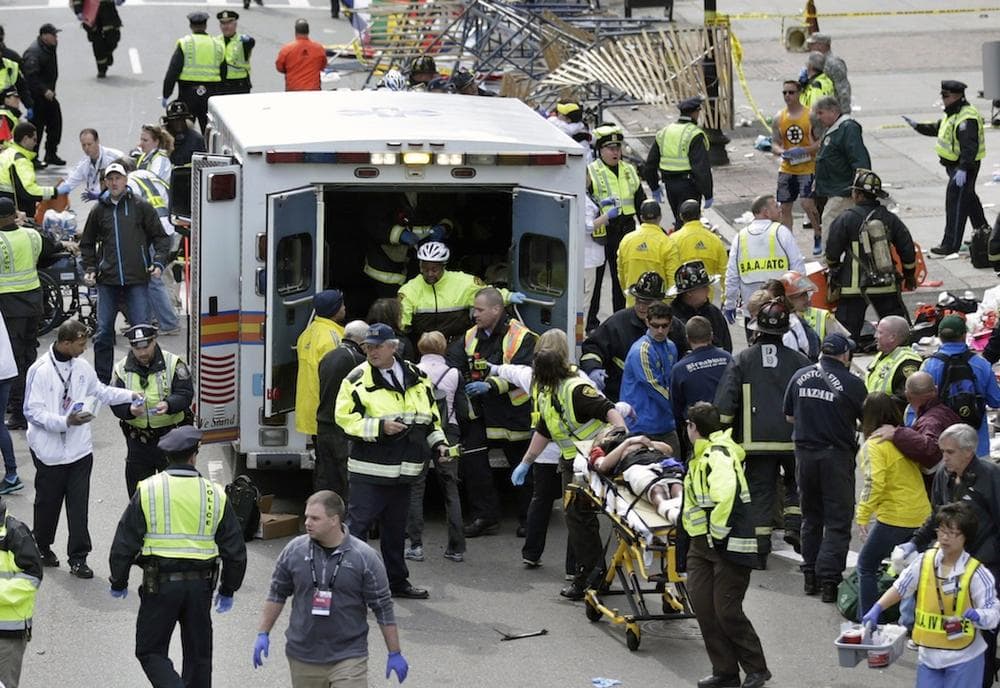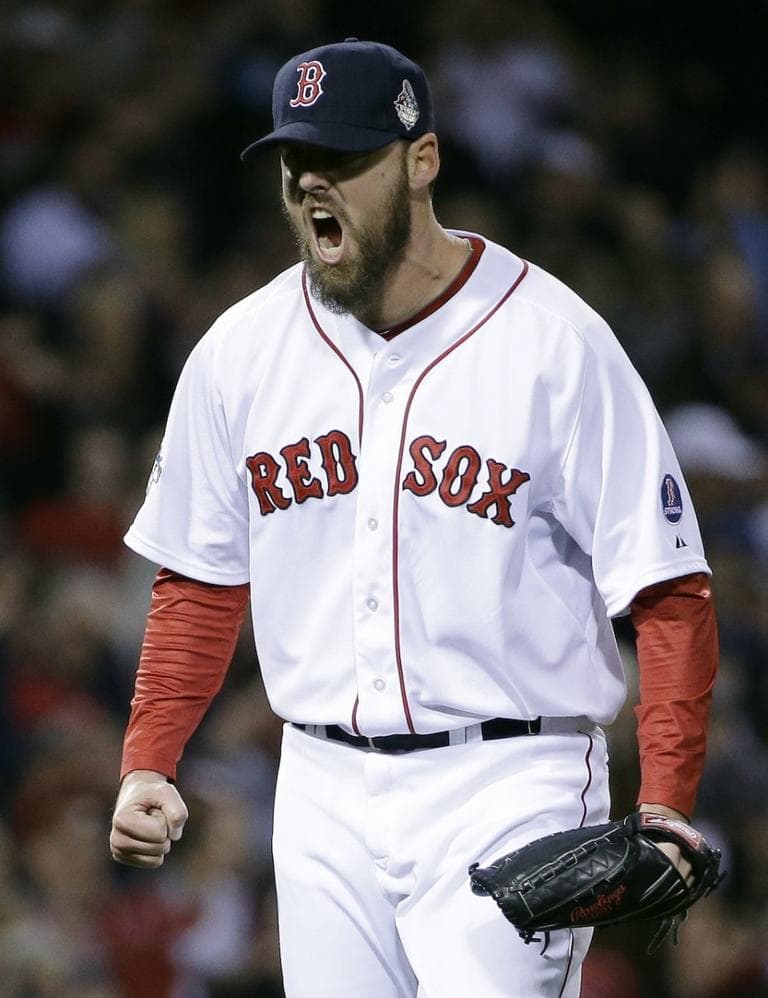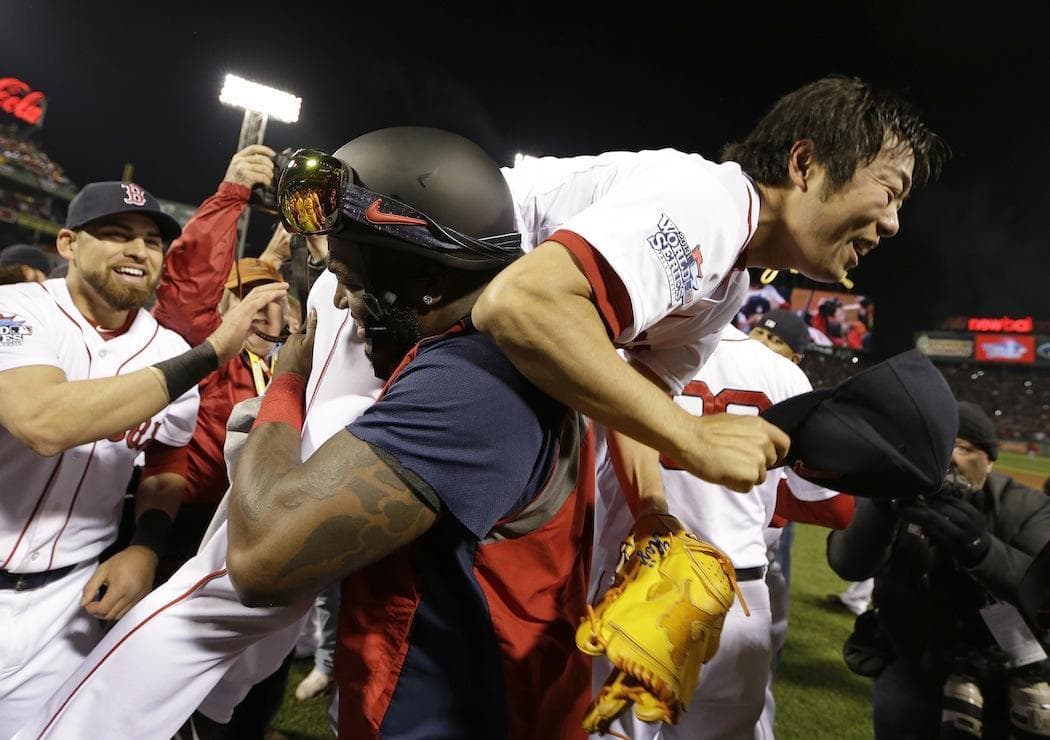Advertisement
The Art And Soul Of The 2013 Boston Red Sox
Call it “David Ortiz and the Power of Myth.” Or “The Talented Mr. Lackey.” How about “The Magic Mound”?
Call them anything you like, but the 2013 Red Sox were a work of art, and that’s not the stretch it usually is when sports and art are mentioned in the same breath. There is great craftsmanship in sports, but rarely are there the ingredients that make for an artistic journey.
First of all, there is the narrative of this year’s Red Sox — narratives, actually. I was initially skeptical when the Red Sox tied their fortunes into helping the city recover from the Boston Marathon bombing. But the connection was legitimate, beginning with the fact that the Red Sox always play at Fenway at 11 a.m. on Patriots Day, usually a precursor to the marathon finish.

So when Ortiz said the unprintable — “This is our [expletive] city” — he was acknowledging a historical bond between the marathon and the Red Sox. As John Farrell — the best (and most articulate) manager since Dick Williams — said after the game, the team genuinely believed in its civic responsibility and the fans, in turn, fed off the players’ commitment to Boston. In retrospect, Ortiz’s one F-bomb was more artful than those in all of David Mamet’s obscenity-laced plays put together. It gave the team a defining thread and put the Red Sox squarely in the middle of a story that was bigger than any sports team.
Writers, of course, are always looking for narratives for sports teams — lunch bucket brigades, no-name defenses — but in the age of free agency, most narratives take a back seat to one pack of mercenaries beating another pack of mercenaries. As my cousin often says, the Red Sox finally beat the Yankees and won the Series in 2004, but had to become the Yankees to do it.
The mercenary approach reached its nadir two years ago, when it almost seemed as if Red Sox fans were rooting for the collapse of a team defined by materialism and egocentrism, with enormous payouts to players who seemed the antithesis of team players. Terry Francona, another fine manager, had obviously lost control of the team. The 2012 last-place finish — I actually started rooting for the Yankees — was more than anyone could take and cheers greeted the trading of three of their problem players.
That marketplace-morality team could never have connected to the marathon bombing, but this one could. Let’s not kid ourselves — these players are paycheck-driven, too, and we may well have seen the last of Jacoby Ellsbury and Mike Napoli, among others, unfortunately.

Still, Ben Cherington was able to put together a team that blended free agency with a we’re-all-in-this-together spirit that mirrored the city’s reaction to the bombing. Ortiz and Dustin Pedroia were the spark plugs, two guys who symbolized the Sox winning ways of the past along with leadership and strong character.
And this is where the bombing thread met up with more personal, humanistic narratives that transcended moneyball. This is not a country that’s generous with second chances, but two pitchers so marvelously embraced the spirit of redemption and atonement that they were quickly taken to heart. And while there were bumps along the way the Red Sox would not be celebrating this championship without the postseason performances of Jon Lester and John Lackey, who had been tarnished along with Josh Beckett as clubhouse bad boys and underperformers.
Redemption is another word easily tossed about, but these two guys were regular Sydney Cartons from “A Tale of Two Cities,” only they got to keep their heads and find a more earthly glory.

Everywhere you looked in the dugout there were players willing to step up and be major or minor players, no one more transcendent than Koji Uehara, who inherited a role no one thought he could fill and became the best closer in baseball. The writer James McBride recently attributed his success to “being in the right place when God sneezes” and Uehara embodied the heroic spirit of being able to deliver with a Hemingway-esque grace under pressure when given a chance.
I did not devote a huge amount of time to the Red Sox during the regular season, but it seemed whenever I looked, or read about it the next day, there was a different hero’s journey being discussed, usually a winning home run, often coming from behind, by guys I had barely heard of — Carp, Ross, Gomes, Saltalamacchia, Middlebrooks. Along with the more predictable heroics of Ortiz, Pedroia, Napoli, etc.
Artists questioning the Darwinian side of American culture — and who among them doesn’t — need look no further than the communal Red Sox. They would also find something else significant about baseball in general, but the Red Sox in particular.
It has long been fashionable to say that football has supplanted baseball as America’s game, but baseball mirrors another theme in contemporary art — the attempt to make America a more inclusive place for everyone. Take a look at these Red Sox — black and white, Asian and Latino, Native-American (Ellsbury, on his mother’s side) and Jewish (Craig Breslow).
Granted, the Asians are mostly from Japan and African-Americans are less interested in baseball now than football or basketball, but as in art, symbolism is everything and this looked like 2013 America.
The story of the 2013 Red Sox was a thematic masterpiece, beginning with the team’s response to tragedy and ending in triumph as they left behind individualism for selflessness. It’s as good a story as I’ve read in years.
More:
- Red Sox Parade Set For Saturday At 10 A.M.
- BSO And St. Louis Symphony Orchestra Throw Down In Epic World Series ‘Brass-Off’
- Red Sox Win 3rd World Series Title In Decade
- Scenes Outside Fenway: Sox Clinch The Series
- Cognoscenti: Sorry To Disappoint, But The Red Sox Didn’t Win Because Of ‘Redemption’
- Cognoscenti: 3 Things We Can Learn From The 2013 Red Sox
- Dominant Ortiz Wins World Series MVP
- Worst To First: Red Sox Win World Series
This program aired on October 31, 2013. The audio for this program is not available.
